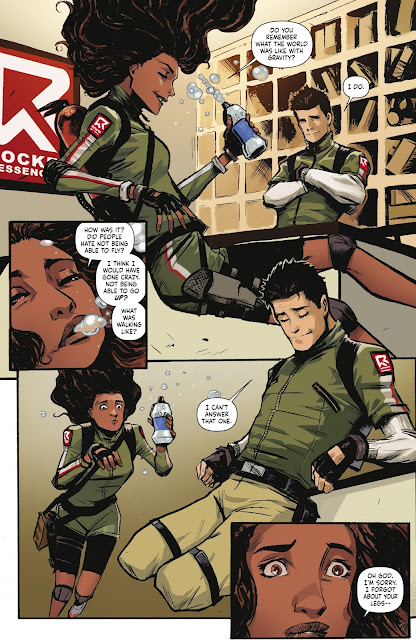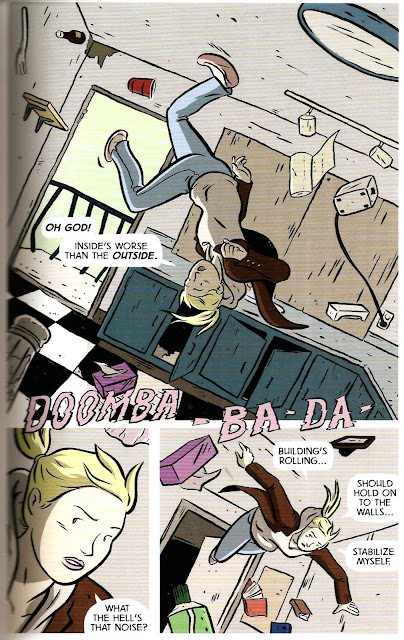Ever since he has looked heavenwards in envy, man has wanted to fly, consequences be damned.
On a random comment board, it was mentioned in passing that of all the mechanism failures that occurred on Star Trek, ranging from Holodeck Malfunctions to Warp Core Explosions, the one standing feature that remained intact during all these disaster scenarios was the gravity controls. No matter how dire, it was imperative that everybody keep their feet on the ground. Other Sci-fi shows with a higher budget such as The Expanse managed to expand on that concept, showing just how unfeasible it could be to survive on a gravity-free zone. The major reason that these far-concept shows had such a stranglehold on the gravity controls is that they were mainly filmed on Earth. (Sorry for spoiling the illusion guys!)
All this stemming from news that the latest Tom Cruise movie, Vyozov (The Challenge)’s marketing gimmick would be the first film that would be filmed entirely in space. By a Russian crew, no less. (Whether it’d be any good is immaterial)
This led to a discussion of realistic portrayal of living in a stimulated environment, and there were very few comics that accurately reflected what it’d be like to live in a world without gravity. The ones that did, showed just how ubiquitous gravity surrounds us to the extent that we don’t think about it. This page from chapter 21 of Grease Monkey by Tim Eldred shows what happens when it's not around, and how much of a mess keeping everything floating around would be.
I started thinking about this after reading the entirety of Skyward, written by Joe Henderson, and drawn by Antonio Fabela and Lee Garbett. At first, Skyward seems to openly embrace this concept with open arms, when one day all of a sudden, gravity just seems to cease working properly. But then this open-world policy quickly devolves into cliched territory, making for a less satisfactory read than would otherwise be expected.
There are scenes of imaginative worldbuilding such as having millionaires fitted with magnetic boots to recapture life like it was before, and people using slotted buckets to capture water from an incoming storm, but for the most part, it’s filled with flawed leaps of imagination.
One of the failed suspensions of disbelief is the inclusion of a disabled love interest who would prefer to remain in this gravity-free world where where a return to normalcy would mean being tied down.
That in itself isn’t a bad idea. The problem is, all portrayal of him shows him as being at the same height of everyone, regardless of his missing legs or not.
Standing around like a disembodied leg guy from that episode of Quantum Leap.
Whether this fault lies at the hands of the author or the writer, I couldn’t say, but it’s safe that neither of them are sufficiently handicapped.
Segueing back to Tim "Grease Monkey" Eldred, his other online work, Pitsberg, has a much more nuanced take on amputees closer to The Expanse, where condemned miners of space minerals (there's a lot of exposition involved, but space minerals is what we're working with) have to undergo required extraction of body parts in order to reduce expenses. And in a gravity-free zone, legs are just one of the many deemed minor unnecessary "inconveniences" to go. As such, there's a greater variety of legless bodies in a floating environment to deal with.
For the most part, until someone is able to spend sufficient time in a gravity-free zone and have the imaginative insight to document a wider-spread alternate reality, such fantastic concepts would be better suited to the realm of short stories.
For me, the one comic that manages to succeed in this where others fail would be Sherwin Tjia’s Plummet, where a young woman wakes up and finds herself falling mid-air.
It sounds like a Mr. Boffo joke, but it’s one of the best underrated Canadian comics you’ve never read.
Being in perpetual free-fall with numerous random objects appearing out of nowhere means you’re never fully prepared for what may happen next. One of the falling objects happens to be a section of an apartment building, which has potential for housing valuable supplies like food and clothing. Of course, navigating inside isn’t as easy as it first seems.
Trying to eat or sleep in these conditions is impossible without proper preparation or a little luck. And when it does come, it’s recommended to jump at the chance whenever it occurs. Eventually, she meets other people caught in the same situation as her, some who’ve managed to build something out for themselves, others who’re just as clueless as she is, some are friendly, and some are not. In the afterword, Sherwin Tjia writes that the format for this ambitious comic was written to be a road story. Well, a vertical road story, always going forward, never looking back.
The best thing about this comic is while there are various theories bandied about, the circumstances that caused this is never explained. Any potentially plausible explanation would RUIN the experience. If you get the chance, I heavily recommend you pick it up. Doubtless it’d be far more intriguing than whatever the upcoming Tom Cruise movie plot is.

















No comments:
Post a Comment